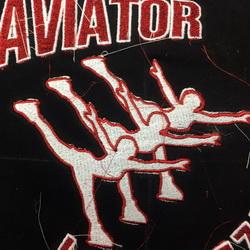Search the Community
Showing results for tags 'rather'.
-
There seems to be so many information on embroidery design distortions — parts of the design overlapping or, on the contrary, having gaps between them. Even I have expatiated upon the subject often enough, either covering my own unsuccessful attempts or just musing about how the things should be and how they are in reality. One should think that if I wrote about it myself, I would take it into consideration, but no, the same trouble continues to arrive at my doorstep from time to time. Now then, I have digitized a design for a client so that she would embroider it on her own machine. I created a design with the knitwear peculiarities in mind, like I always do. I have already become a skilled hand at that, and even if there are imperfections, they are not critical. Then she sent me photos, and I saw that it was a disaster: It was embroidered on the dense knitwear. Something akin to the french terry, I guess. To say the outlines were displaced is to say nothing. This notwithstanding the fact that I arranged for the thread to be changed often, in order to the object fill to be embroidered first, and its outline right after that. I immediately began to doubt of my capability of digitizing anything and think that I'd probably better be done with design creation and machine embroidery in general. So I rushed to embroider it on my own equipment, to see what was wrong with the pattern that I had created. As I didn't have any french terry to do the test, the only thing I managed to find was a piece of thin knitwear used for beanie caps. I hooped it, embroidered the design in question and got this: No so awful; there are some imperfections here, but considering that this was a big design embroidered on knitwear — a material with more than 50% stretch, it is not so bad at all. Well, I probably should have lowered the density of the red fills, but in general, everything is OK. The only possible answer to the question of why my client got a result depicted on the first photo is that during the embroidery there were technical mistakes, such as: Knitwear being slack in the hoop. Wrong stabilizer. Now I'm curious: are these the only possible causes? Is it possible that the equipment is to blame? So I went searching for the literature on the subject and asking well-informed people what exactly should I search for and where. In the end, I got to understand this. If such a trouble occurs, you should not only check the pattern, the hoop and the stabilizer, but the machine as well: Whether the frame holder is correctly attached. The hoop is badly attached to the holder and bounces out of it (I have a similar trouble with my Velles 15). The embroidery shifts, but not in the way I described. The hoop bounces. Something obstructs its movement; you should check for the presence of foreign objects around the X and Y axis drivers. I've had this problem before, and the hoop bounced, but it looked different. You need to check the tensions on the X and Y axis drivers. How to do it? I haven't figured this out yet, though I have the material. The fabric may get caught in the parts of the machine. I've encountered a similar problem before. But this is not the case. Voltage drops in the power system can also be the reason. I have a strong suspicion that the machine is not to blame in this case; the embroidery technique is the problem. I cannot say that having embroidered the design on my own machine took a load off my mind. I've mentioned in the past that the end result equally depends on the design creator and the embroiderer. And now I'm all uncertain if one should do such a thing as digitizing for someone else? There is a possibility of them getting bad result, and you will be the one taking all the blame. How should one digitize an image remotely so as to be sure the outcome will be good? I haven't received the money for my pattern, by the way.



